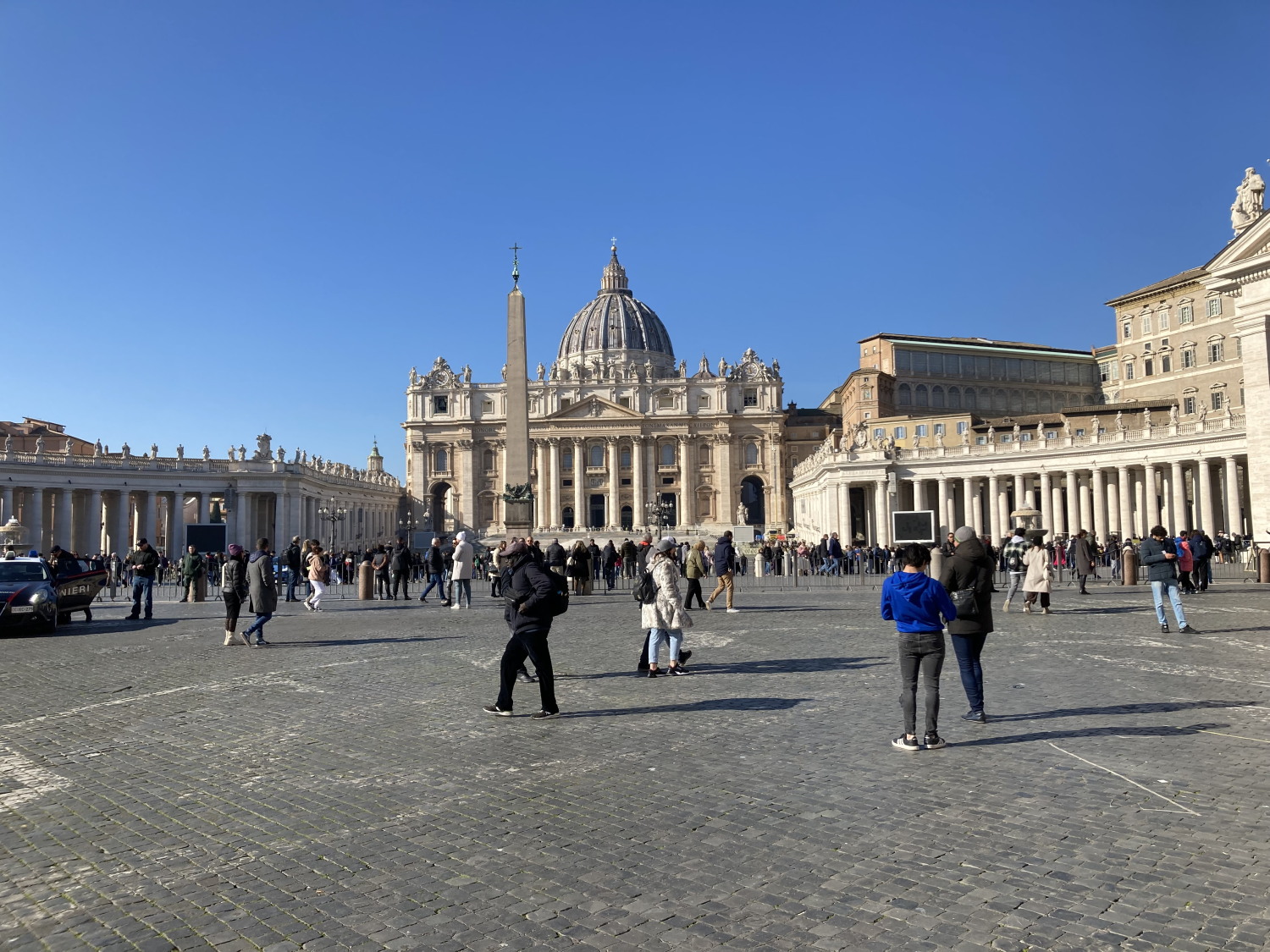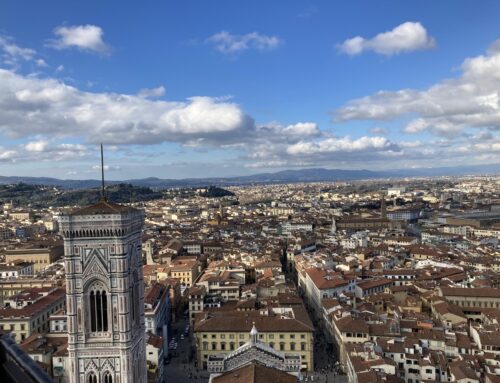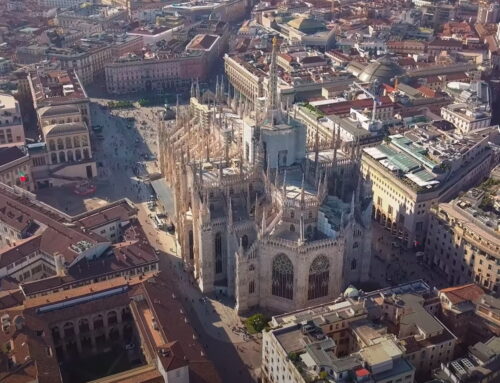Everything you need to know about traveling to Rome, Italy
Rome, the capital of the Roman Republic, and Roman Empire, is one of the most iconic cities in the world. It is an absolute must see for anyone interested in world history, along with great food and amazing cultural experiences.
With this guide, you will learn about the best things to see in Rome, the best things to do, where to stay and when to go.
Let’s get to it!
Rome location and geography
Parts of the discussions on this page are derived from the Wikipedia page for Rome.
In addition to being the capital of the Republic of Italy, Rome is the capital of the Lazio region, one of the twenty regions in the Republic of Italy.
Geographically, Rome is located about 40 minutes by car from the west coast of the Italian peninsula, about halfway between Florence to the north and Naples to the south.

Because of this location, Rome is easily accessed by both rail and car from both Naples and Florence, along with Bologna. This also makes Rome very appealing as a base for any vacation to Italy.
The airport that serves Rome (Rome Fiumicino Airport) is located along the west coast, about 40 minutes by car from the historic center of the city.
With an urban population of about 2.8 2.8 million people, Rome is far and away the most populated city in Italy, about twice the size of the second largest city, Milan.
This population is contained within an area of 496 square miles. Much of this area is contained within a beltway that circles the city to allow vehicle traffic an alternative to access communities in all directions without driving through the city.
Due to the historical significance of Rome, and since Vatican City is contained within the city, it attracts millions of tourists every year.
A brief history of Rome

The Colosseum
There is archaeological evidence that suggests the area around Rome was inhabited as many as 14,000 years ago.
Settlements around the area of Rome were eventually aggregated into what became the city sometime during the late Bronze Age and early Iron Age.
Agricultural productivity grew to the point where more was produced than needed, and this led to the establishment of other activities that supported the community.
Trade then developed with Greek communities located further south on the Italian peninsula, and it is the growth spurred on by these activities that led to the establishment of Rome.
This is in contrast to the myth of Romulus and Remus regarding the foundation of Rome.
For a couple hundred years, Rome was ruled as a monarchy. After the last of the kings was expelled in 509 BC, the Romans formed an oligarchic republic.

Appian Way
Rome became the dominant power in the Mediterranean through several major wars fought in the 3rd and 2nd centuries BC against Carthage and the Macedonians.
As a result of these conflicts, Roman provinces were established in Sicily, Sardinia, Hispania, Macedonia, Achaea (southern Greece) and North Africa.
Continuous internal conflict between two ruling groups, the conservative optimates and the populares which relied upon the urban lower class to gain power.
The bankruptcy of small farmers and the establishment of large slave estates caused a mass migration to the city.
The constant warfare led to the establishment of a professional army, which tended to be more loyal to its generals than the Republic.
Two civil wars then occurred, in the first century BC, the second of which resulted in Julius Caesar becoming dictator of Rome.
After his assassination, a final civil war was fought, with Octavian defeating Mark Antony, and establishing himself as Augustus Caesar, the first Roman Emperor.
The Roman Empire achieved its greatest expansion in the 2nd century AD under Emperor Trajan. During this time period, Christianity began to spread rapidly.
At its height, the empire stretched from the Atlantic Ocean in the west to the Euphrates River in the Middle East, and from Britain in the north to Egypt in the south.
Christianity became the official religion of Rome in 380 via the Edict of Thessalonica. Emperor Theodosius I was the driving main driver of this proclamation, and the last emperor of the united Roman Empire.
After his death in 395, his two sons divided the empire into East and West.
Rome was sacked by the Visigoths in 410 and the empire was in clear decline. The Fall of the Western Roman Empire occurred in 476 when Emperor Romulus Augustus was deposed.
By 500 AD the population of Rome had shrunk from over a million at its peak to under 100,000.

St. Peter’s Basilica
During the Middle Ages, the Holy Roman Empire and the Papacy constantly fought for control and there was constant conflict. Finally, in 1418, a Roman Pope, Martin V, was elected, and this helped to usher in the Renaissance.
Until the mid-16th century, the ruling popes dedicated efforts to the Eternal City and the arts. As a result of this focus, the new St. Peter’s Basilica, the Sistine Chapel and the Ponte Sisto were constructed.
The popes accomplished these developments by contracting the top artists of the time… Michelangelo, Raphael, Botticelli and others.
In 1861, Italy was united as the Kingdom of Italy, with the exception of Rome, which was under papal control with French backing. The French military presence was withdrawn to fight a war against Prussia, and Italian troops captured the city in 1871.
The capital of Italy was then moved from Florence to Rome.
After World War I, Benito Mussolini rose to power, and he declared a new Italian Empire. This empire allied with the German Nazis in 1938.
During World War II, Rome remained largely unscathed due to the presence of the Vatican and art treasures, although the San Lorenzo district was bombed in 1943.
After World War II, Rome experienced substantial growth and it became a center of fashion and several popular films were filmed in the city.
The population rose to about 2.8 million people by the 1980s, until many people began moving to the suburbs and the population began a slow decline.
Today, Rome is the third most popular destination for tourists in Italy, behind only Venice and Bolzano.
Rome Climate
Florence has a somewhat mild climate during the Winter, but can get quite hot during the Summer months.
The peak average high reaches 89 degrees in early August, with a high monthly average of 87 in both July and August.
Meanwhile, the average high for the coldest month of the year, which is January, is 54 degrees.

The wet season in Rome begins in September and runs through November, which is the wettest month of the year. While snow flurries are common in the winter, it is rare that snow accumulates.

What you should know before you go to Rome Italy
Here are some tidbits that you should know before traveling to Rome, from the obvious to the not-so-obvious.
Currency: Euro
Language: Italian of course. While English is spoken throughout Rome, particularly in the tourist areas, there will be plenty of instances where it is not spoken. This is definitely the case when you venture out of the city into smaller towns. We highly recommend that you learn some Italian before you go. Many Italians will appreciate the effort. Rosetta Stone is a popular app for learning Italian.
Visa Requirements: For stays under 90 days, you do not need a Visa, but you will need your passport.
Electricity: Europe has different electrical outlets than what we have here in the US, so you will need an adapter.
Car Rentals: The historic center of Rome is somewhat walkable, but not for everyone. However, if you intend to travel out from Rome into nearby smaller towns, then you’ll want to rent a car. You’ll need an international driver permit along with your driver’s license. If you do not have an international driver’s permit, head on over to your nearest AAA office.
To find the best deals on rental cars in Rome, check out Discover Cars.
Flying to Rome: The most active airport in Italy is Rome Fiumicino Airport, which is about 40 minutes by car from the historic center in Rome. It is located along the west coast of Italy. There are plenty of direct flight opportunities to Rome from major cities in the U.S. These do tend to be more expensive than flights with one or two stops.
If you are trying to keep the cost of your trip down, you can find cheaper flight alternatives here. You can also check out our tips for flying to Italy.
If you don’t intend to rent a car, and need transportation too, check out Kiwi Taxis.
The Trains: If you intend to visit other nearby cities in Italy while in Florence, the trains are a great solution. There is high speed service from Florence to Rome, Bologna, Milan and Venice. You can also take local trains to a number of other nearby areas such as Pisa, Arezzo, and La Spezia, among others.
Travel Insurance: Anytime you plan on a trip overseas, you should consider purchasing travel insurance. Travel insurance can cover the cost of medical emergencies, lost baggage, unexpected trip cancellations, etc.
Travel Insurance Master can help you find the coverage you need for your trip.
When is the best time to go to Rome Italy?
Given the mild winter weather, virtually any time is a good time to go to Rome.
Keep in mind though, it does get quite hot in the summer, so unless your trip includes some beach time, you’ll maybe want to stay away in July and August.
Given how close Rome is to the west coast of Italy, you can definitely plan a trip that includes time at one or more of the nearby beach towns.
Otherwise, just about any time is a great time to visit Rome. As indicated earlier, the average high temperature in January is about 54 degrees. That’s not too bad when you are exploring Rome, and any of the other towns in the Lazio region.
Keep in mind, you’ll likely find fairly heavy crowds throughout the year in Rome, due to its popularity as a destination. Along with our visit to Florence, we visited Rome in January and it was still crowded as you can see by this photo near Trevi Fountain below.

Best things to do in Rome Italy
Rome offers so much to the tourist that it is pretty much impossible to see all you want to see in a day or two. With that in mind, try to give yourself a minimum of three days when visiting.
Colosseum/Palatine Hill/Roman Forum

Ruins on Palatine Hill
At the top of our list is The Colosseum. It first opened in the first century AD and it had a seating capacity estimated at 50,000 people. This makes it one of the true marvels of the ancient world.
Next, make your way up nearby Palatine Hill site of Rome’s imperial palaces, beginning with Augustus. It is a bit of a hike to get up to the top of the hill, but well worth it!
Once finished there, head back down the hill and explore the ruins of the Forum, which was the center of everyday activity in ancient Rome.
Give yourself several hours to wander through these incredible sites. We recommend getting your tickets ahead of time and getting to the Colosseum fairly early to get ahead of the crowd.
Vatican City
Next on the agenda, or perhaps first, is a visit to the Vatican. Start with St. Peter’s Basilica, which is free to enter. You can pay to climb to the top of the dome (551 steps), or pay a little extra to take an elevator ride that cuts your climb down to 320 steps.
The Pope makes appearances on Wednesday mornings where he addresses the General Audience gathered in St. Peter’s Square, and that is free to attend.
To really make the most of your visit, consider one of the private tour offerings available.
The Pantheon/Trevi Fountain/Spanish Steps

The Pantheon
A couple miles to the east of Vatican City is our favorite neighborhood in Rome. It houses The Pantheon in the Piazza della Rotonda.
The Pantheon is another fabulous temple that was converted into a Catholic Church a few hundred years after it was constructed in the 2nd century.
Take a stroll through the neighborhood for about 1/2 mile to the east, and you will find the Trevi Fountain.
Just a couple more blocks and you will find the magnificent Giardini del Quirinale and the Quirinale Palace.
About a ten minute walk north of Trevi Fountain are the Spanish Steps, which provide access between the Piazza di Spagna at the bottom and Piazza Trinita dei Monti at the top.
If you still have time while in the neighborhood, head another block to the north to the Villa Borghese, the third largest public park in Rome.
Museums/Palaces
There are numerous museums throughout Rome, so here is a brief list of some of the more important ones you may want to visit.
- Castel Sant’Angelo
- Capitoline Museums
- Galleria Borghese
- Palazzo Doria Pamphilj
- MAXXI (Contemporary Art Museum)
Appian Way
The Ancient Appian Way dates back to 312 BC. This is the ancient road along which many a Roman army marched to and from their wars throughout the empire.
The main historical sites are located along a two mile stretch within a park located about two miles to the south of the Colosseum.
Final Thoughts
As you’ve noticed, there is so much to see in Rome, and you may not get it all done in one visit.
A common theme of this Italy blog is that you should consider just taking at least one day to wander with no plan. Enjoy the local scenery, markets, piazzas and cafe’s and if something catches your eye, then consider setting up a tour for later.
Where to stay in Rome Italy
To have easiest access to many of the important sites within a reasonable walking distance, we recommend the Municipio I neighborhood. This is where The Pantheon and Trevi Fountain are located.
There are a number of nice boutique hotels in this neighborhood.
We stayed in the Albergo Abruzzi hotel, directly across from The Pantheon, and couldn’t have been happier!
This boutique hotel has 19 rooms, and was originally constructed in the 1400s. We had a great room, and the service was excellent.
While the walk was about 45 minutes, we did walk from this location to The Vatican. The Colosseum is about a 25 minute walk, while Trevi Fountain is just a half mile away.
There are numerous restaurants and shops nearby as well, so we found the neighborhood perfect for our two-day stay in Rome.
You can check out more hotel options by filling out the form below.





